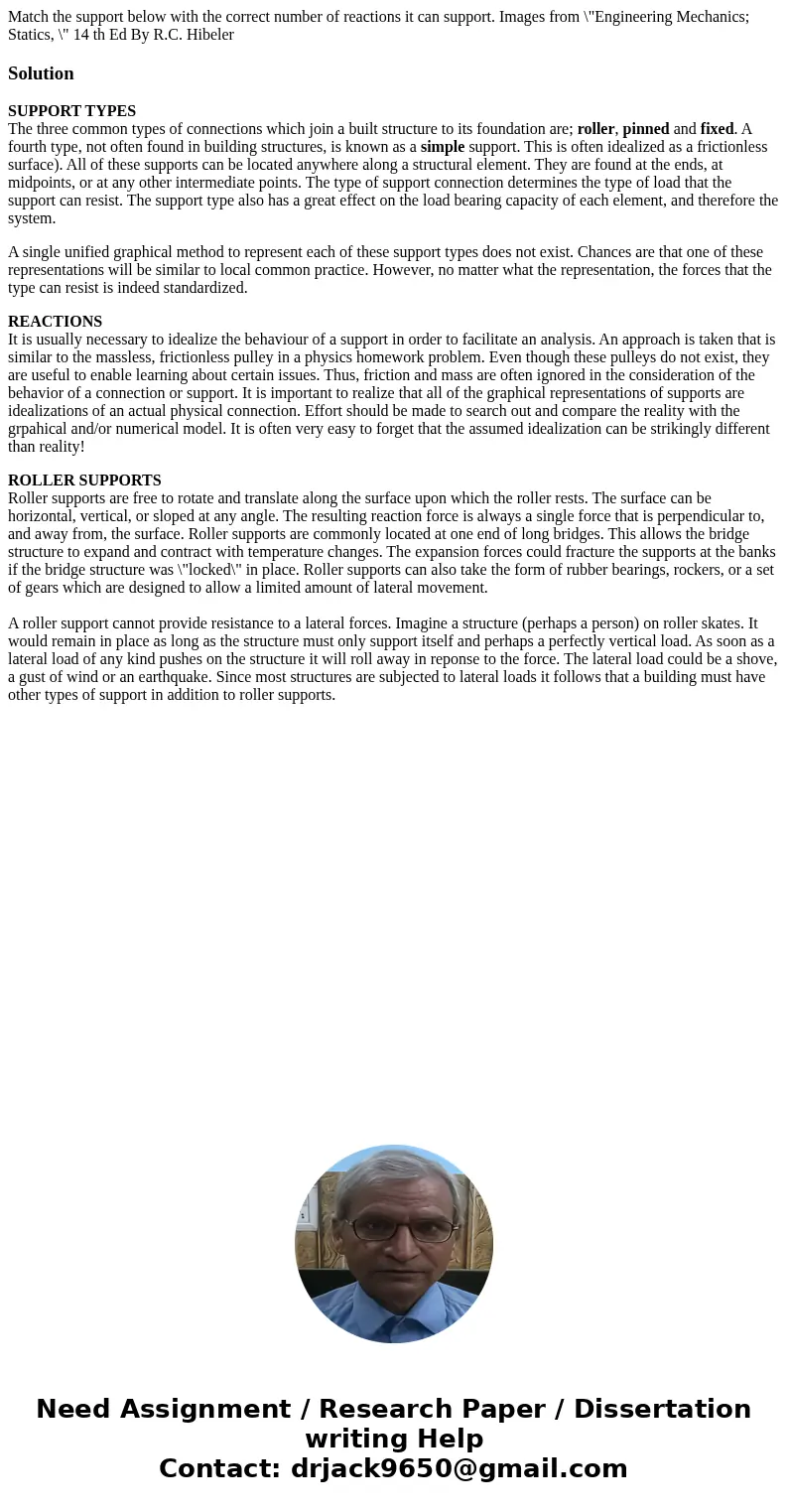Match the support below with the correct number of reactions
Solution
SUPPORT TYPES
The three common types of connections which join a built structure to its foundation are; roller, pinned and fixed. A fourth type, not often found in building structures, is known as a simple support. This is often idealized as a frictionless surface). All of these supports can be located anywhere along a structural element. They are found at the ends, at midpoints, or at any other intermediate points. The type of support connection determines the type of load that the support can resist. The support type also has a great effect on the load bearing capacity of each element, and therefore the system.
A single unified graphical method to represent each of these support types does not exist. Chances are that one of these representations will be similar to local common practice. However, no matter what the representation, the forces that the type can resist is indeed standardized.
REACTIONS
It is usually necessary to idealize the behaviour of a support in order to facilitate an analysis. An approach is taken that is similar to the massless, frictionless pulley in a physics homework problem. Even though these pulleys do not exist, they are useful to enable learning about certain issues. Thus, friction and mass are often ignored in the consideration of the behavior of a connection or support. It is important to realize that all of the graphical representations of supports are idealizations of an actual physical connection. Effort should be made to search out and compare the reality with the grpahical and/or numerical model. It is often very easy to forget that the assumed idealization can be strikingly different than reality!
ROLLER SUPPORTS
Roller supports are free to rotate and translate along the surface upon which the roller rests. The surface can be horizontal, vertical, or sloped at any angle. The resulting reaction force is always a single force that is perpendicular to, and away from, the surface. Roller supports are commonly located at one end of long bridges. This allows the bridge structure to expand and contract with temperature changes. The expansion forces could fracture the supports at the banks if the bridge structure was \"locked\" in place. Roller supports can also take the form of rubber bearings, rockers, or a set of gears which are designed to allow a limited amount of lateral movement.
A roller support cannot provide resistance to a lateral forces. Imagine a structure (perhaps a person) on roller skates. It would remain in place as long as the structure must only support itself and perhaps a perfectly vertical load. As soon as a lateral load of any kind pushes on the structure it will roll away in reponse to the force. The lateral load could be a shove, a gust of wind or an earthquake. Since most structures are subjected to lateral loads it follows that a building must have other types of support in addition to roller supports.

 Homework Sourse
Homework Sourse